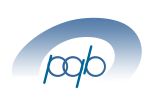T 45v16D - Free demo course - ISO 37001 internal audit anti-bribery management system version 2016
Free demo course - E-Learning (online course) - Conduct an internal audit of your ISO 37001 anti-bribery management system and your processes
|
||||

|
|
|||
|
See the online course T 25v16 ISO 37001 readiness See the online training package T 85v16 ISO 37001 readiness and internal audit |
||||
| Result of the training satisfaction survey : | 82.9% | Last update on January 17, 2025 |
Description of the online course internal audit of your anti-bribery management system ISO 37001: 2016
Discover the internal audit in an ISO 37001 version 2016 certified company and
- locate the audit in the anti-bribery approach
- identify the stakes
- understand the requirements
- control the tools
Get used to
- best practices
- good behavior
- the terminology
- ISO 37001 ABMS readiness documents
- ISO 37001 ABMS internal audit documents
- the questionnaire
- the report
The important and fundamental elements of an internal audit
- scope
- normative references
- principles
- audit program (responsibilities, records)
- audit conducting (objectives, evidence, conclusions)
- auditor competence (knowledge, training)
The menu of the course
- Presentation
- MCT (multiple-choice test) Beginning (10 questions)
- 1 Scope
- 2 Normative references
- 3 Definitions
- 4 Principles
- 4.1 Management principles
- 4.2 Audit principles
- 4.3 ABMS performance
- MCT Internal audit (7 questions)
- 5 Audit program
- 5.1 General
- 5.2 Objectives
- 5.3 Risks
- 5.4 Establishing
- 5.5 Implementing
- 5.6 Monitoring
- 5.7 Reviewing and improving
- Case New risk
- Case Audit program
- MCT Audit program (11 questions)
- 6a Audit preparation
- 6.1 General
- 6.2 Initiating
- 6.2.1 First contact
- 6.2.2 Situations and feasibility
- 6.3 Preparing the audit
- 6.3.1 Document review
- 6.3.2 Audit plan
- Case Nonconformities
- Case Audit readiness
- MCT Audit preparation (8 questions)
- 6b Conduct an audit
- 6.4 Audit activities
- 6.4.1 Opening meeting
- 6.4.2 Audit evidence
- 6.4.3 Audit conclusions
- 6.5 Audit report
- 6.6 Completing the audit
- 6.7 Audit follow-up
- 6.4 Audit activities
- Case Audit finding
- Case Audit report
- Case Management review
- MCT Conduct an audit (8 questions)
- 7 Competence and evaluation of auditors
- 7.1 General
- 7.2 Auditor competence
- 7.3 Evaluation criteria
- 7.4 Evaluation methods
- 7.5 Auditor evaluation
- 7.6 Improving competence
- Case Auditor question
- MCT Auditor competence (7 questions)
- MCT End (20 questions)
Read more about the online course ISO 37001 internal audit version 2016
To conduct an audit according to ISO 19011 in order to:
- identify improvement opportunities
- increase the satisfaction of stakeholders
- evaluate the performance of the ISO 37001 anti-bribery management system
Basic knowledge of ISO 37001: 2016, rudiments of ISO 19011: 2018
Any person involved in the implementation and maintenance of an ISO 37001 anti-bribery management system:
- director
- anti-brinery manager
- quality manager
- metrology manager
- safety manager
- maintenance manager
- QSE manager
- IT technician
- internal auditor (present or future)
- quality technician
- quality operator
- person in charge of specific system, process or product audit
- future auditee
- student
21 hours online on average (according to knowledge and aptitudes this duration can vary individually). One hour of online training is equivalent to at least 2 hours of training on the spot
The methods how to organize and conduct the audit:
- build the audit plan
- control the questionnaire
- know-how to avoid the conflicts
- analyze the documents
- show the strong points
- detect the improvement opportunities
- make so that conclusions are accepted
- write the audit report
- initiate the actions
- follow-up the actions
Methods and tools
- dedicated Internet site
- specific online training module
- Open and Distance Learning (ODL)
- your training history:
- the time you have passed on each clause and sub-clause of the module
- the record of the score of all your trials of the MCTs (multiple-choice tests)
- level test at beginning of the training
- MCTs with comments, notes on a 20 point scale and recommendations
- videos
- true stories
- good practices
- bad practices
- case studies
- jokes
- games
- online tutorial :
- a follow up of acquired material and the progress of each trainee
- online or by e-mail within 24 hours
- personalized answers to questions
- advice and recommendations about documents, books and useful links
- delivered certificate of attendance and mastery at the end of the training (example)
Access to the course is 60 days from the date of validation of your order. This period will be renewed for free upon a simple request within 6 months
What not to Say during an ISO Audit Part 1 2' 08"
What not to Say during an ISO Audit Part 2 2' 43"
What not to Say during an ISO Audit Part 3 3' 12"
ISO 19011:2011 Auditor Training 13' 05"
How to survive an ISO Audit 16' 57"
Internal Quality Auditor Course 20' 46"
How to Conduct Internal Audit Step by Step Process 24' 22"
Webinar | Understanding Anti-bribery Management Systems under ISO 37001 | SoftExpert 30' 04"
ISO37002 – How this new standard can benefit your organisation’s whistleblowing programme 57' 42"
Insights and Updates: The ISO 37001 Anti Bribery Standard 1h 01' 23"
Corruption and Anticorruption: A talk by Professor Matthew Stephenson 1h 10' 42"
ABMS Full Course of ISO 37001:2016 | Training on ISO 37001:2016 | Training on Full Course | 1h 57' 16"
Requirements and quiz ISO 37001 version 2016
Here is a MCT (Multiple-choice test) to evaluate, before beginning, the level of your knowledge for this course. (One or more correct answers are possible). You can start again as many times you wish.
 1. The results of the process internal audit:
1. The results of the process internal audit:
 2. The objectives of an audit program are influenced by:
2. The objectives of an audit program are influenced by:
 3. The extent of the audit program, among other things, depends on:
3. The extent of the audit program, among other things, depends on:
 4. The audit procedure contains, at minimum, instructions on how to:
4. The audit procedure contains, at minimum, instructions on how to:
 5. The implementation of the audit program requires:
5. The implementation of the audit program requires:
 6. The records related to the audits, among other things, contain the:
6. The records related to the audits, among other things, contain the:
 7. Improving the audit program takes into account the:
7. Improving the audit program takes into account the:
 8. An internal audit is initiated, for example:
8. An internal audit is initiated, for example:
 9. The audit report often contains:
9. The audit report often contains:
 10. Traps to be avoided by an auditor:
10. Traps to be avoided by an auditor:


.png)

